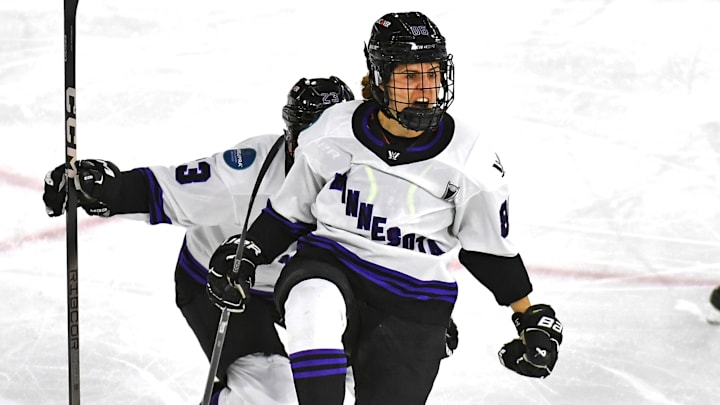The Professional Women's Hockey League's (PWHL) inaugural season was a staggering success. For the first time in hockey history, a North American women's league has a players association, the PWHLPA, and a CBA that guarantees a living wage and health insurance. The agreement was unanimously ratified on July 2, 2023, and will remain in effect until July 31, 2031.
Per the agreement, six players on each team are signed to three-year "special price agreement" contracts worth $80,000 per year and the minimum contract, excluding performance bonuses, is $35,000. The league is requiring that each team averages between $45,900 and $60,500 per contract in lieu of a salary cap. Each season, minimum and average salaries will increase by three percent.
There are several opportunities to earn either individual or team bonuses. The league-wide MVP receives a $5,000 bonus, while the top performers at each position and the rookie of the year receive $4,000. Additionally, those selected for the All-Star game receive between $1,000 and $1,500.
All four teams who make the playoffs will receive bonuses to be split between players: $23,000 for semi-finalists, $40,250 for runners-up, and $63,250 for the champions. Individual and team performance bonuses are also subject to the yearly three percent wage increase.
Women no longer need to work second jobs to play hockey
Salaries for women's hockey are still very low when compared to men's hockey, but this CBA is a remarkable improvement on anything that professional women have seen in the past.
The PWHLPA was actually founded before the PWHL. In 2019, more that 200 women players announced a boycott of all North American leagues, striking for a sustainable league, fair wages, and health care.
We may represent different teams, leagues and countries but collectively we stand as one. #ForTheGame pic.twitter.com/O9MOOL8YOt
— Hilary Knight (@HilaryKnight) May 2, 2019
Most professional players — those without significant endorsement deals — had to work second jobs just to make ends meet and have health insurance which, given that hockey is a high-contact sport, is extremely important. Now, the PWHL is meeting that need.
While it may be very difficult to make salaries at or near league minimum stretch in some PWHL cities with high costs of living like New York and Toronto, it is doable. Additionally, the league wants to explore revenue sharing with players and increase wages as soon as it is profitable. For women's hockey players, this is a start, but there is still a long way to go for true equality in the game.
